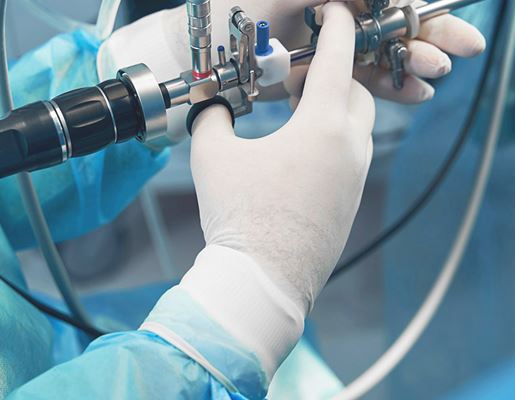Shoulder Replacement Surgery - Day of Surgery
- Home
- Services
- Orthopaedics
- Knowledge Hub
- Shoulder Replacement Surgery – Day of Surgery
Shoulder replacement surgery, also known as shoulder arthroplasty, is a common surgical procedure that replaces damaged areas of your shoulder joint with artificial parts.
This operation is highly effective in relieving shoulder pain, improving mobility and function, and restoring quality of life. It is usually recommended for patients suffering from severe injury or ongoing disease, such as arthritis, that no longer respond to conservative treatments. There are different types of shoulder replacement surgery available that can meet specific health needs, and your doctor can help decide which is the best procedure for your shoulder condition.

Before Surgery
Having observed the required fasting period as advised by your hospital, you will be asked to arrive in time to complete your clinical admission. Here, your medical team will explain the type of anaesthetic to be used and the procedure involved. This is usually a combination of a general anaesthetic, spinal block and local anaesthetic infiltration. You will have the opportunity to talk to your surgeon and ask any final questions about the procedure before the operation begins. Total shoulder replacement surgery can take up to 2 hours.
During surgery
Incision
Your surgeon will make an incision over your shoulder joint to open up the area. This is usually down the front of your shoulder, but may be at the side depending on the type of surgery. After cutting through deeper tissue your surgeon can access the shoulder joint.
Bone removal (Osteotomy)
The shoulder joint is gently dislocated so that the upper arm bone (humeral head) separates away from the socket (glenoid). This allows your surgeon to examine the damaged areas more closely. The top of the humeral head is removed using a specialised tool and the bone is prepared for the prothesis that will replace the natural part. The shoulder socket is also smoothed and prepared in readiness for the attachment using a special reshaping tool. Any bone spurs are also removed.
Implant attachment
The arm bone is fitted with a prosthetic humeral stem that fits several inches down inside the bone. The top of the stem is accurately designed to hold a prosthetic ball in place that mimics the patient’s natural humeral head, facilitating the ball and socket’s joint action. Different size balls may be tested out to ensure the best stability and movement before the final size is selected. The artificial socket is specifically designed to be smooth and slightly concave, in order to aid movement with the humeral head. It is usually made of polyethelyne and sometimes supported by screws to assist with fixation. A special fast-acting bone cement is sometimes used to hold the implants securely in place. Once all the artificial parts are attached, the joint is then manipulated to ensure ease of motion and stability, as well as to check for any potential impingements or dislocation.
Closing the wound
Any disrupted or damaged muscles and soft tissue are repaired. The wound is sterilised and closed using dissolving sutures so that no stiches are visible or will need to be removed. You are then transferred to the recovery ward.

After Surgery
When you wake up from surgery, your arm will be in a brace to protect the shoulder joint while it heals. This will stay on for 2-6 weeks after surgery. A nurse will monitor any post-operative pain through intravenous medication, and you will switch over to oral pain relief prior to discharge that is designed to keep you comfortable. Rehabilitation starts soon after surgery as it will help to strengthen the shoulder and provide mobility. It is important to follow the postoperative instructions as advised by your team. Most patients spend between 1-2 nights in hospital before being discharged back home or onwards to rehabilitation.
What to look out for
- Avoid constipation from pain killers by moving around as quickly as possible after surgery..
- Delayed bowel movements are normal for a few days after surgery.
- Your IV line won’t be removed until you are successfully up and walking about.
- Your physio will give you a full rehabilitation programme of exercises designed to restore strength and mobility.
- Adhere to the wound care instructions and look out for any redness around the incision site.
- Contact your doctor if you notice any increased swelling that doesn’t improve with rest and elevation.

Related Content

Shoulder Replacement Surgery – Your Recovery
Shoulder replacement surgery is a major operation.
Read More
Shoulder Orthopaedics
The shoulder is the most flexible joint in the body. It allows us an incredible range of motion.
Read More
Find a Specialist
Talk to our world-leading orthopaedic specialists about the most suitable treatment options.
Read More